463 Search Results for autism
December 5, 2012
by Robin Parker -
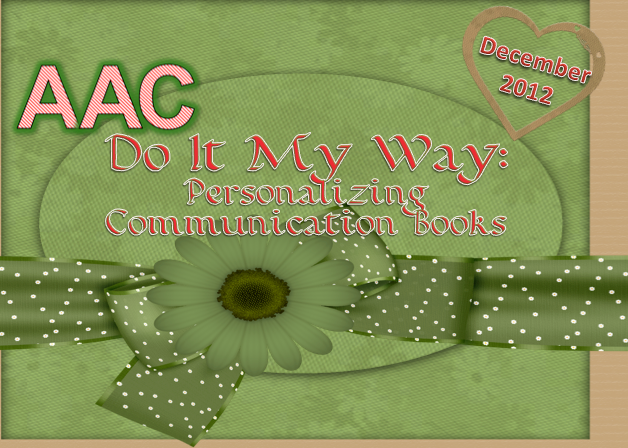
The topic of communication books was introduced this month. We will continue to think about the multitude of decisions to make as we design individual communication books. Obviously, content is the most important issue, but we are often reminded that function and form must go together. Carole gave some great examples of reasons to make the books appealing and personal. I had a situation this week that illustrated this concept perfectly. We continue to learn from the ‘learners’ that we are teaching. I know a little girl with autism who most people think does not care about her peers or how things look. She uses some natural speech and a no-tech communication book. She uses the communication book during her speech-language therapy sessions but only inconsistently outside of the therapy room. She has not expressed interest in taking the communication book with her and although she has some specific visual... [Read More...]
November 18, 2012
by Carole Zangari -
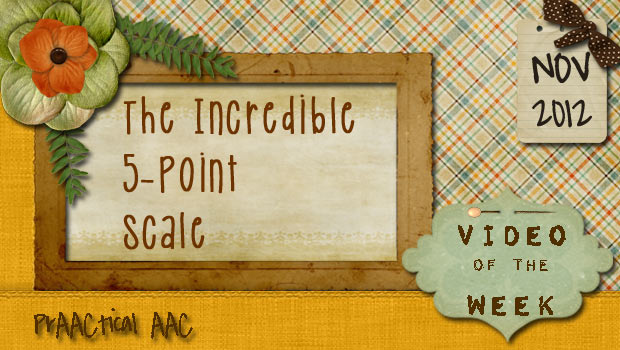
In an earlier post we listed some of our favorite strategies that aren’t as widely used as they could be in AAC intervention. Among them, was qualitative rating scales, or Likert-type scales. We use them for a variety of purposes and love their potential for expressive communication. – In this video, from From Autism and Tertiary Behavior Supports Project of the Kansas Technical Assistance Network, you’ll learn one way of using simple rating scales to help people with ASD regulate their own behavior. We like the detailed implementation information presented in The Incredible 5-point Scale. –
October 25, 2012
by Robin Parker -
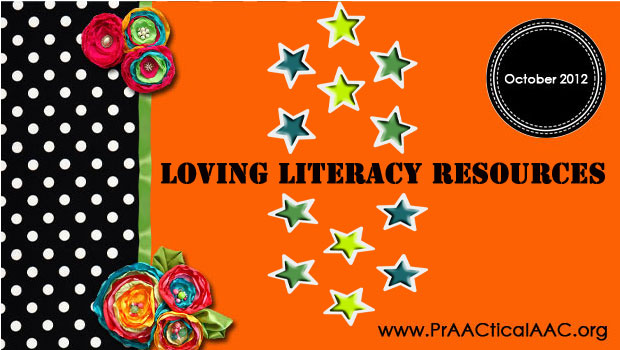
For AAC Awareness Month, we would be remiss if we did not think about literacy. It is a form of communication and language that supports AAC use. Sometimes literacy is difficult for our students, other times it is actually easier and it helps conversational communication and even natural speech. Either way, reading, writing, talking, and listening (understanding) are all modalities of language. There are so many great resource lists for supporting literacy: Jane Farrall’s Letter of the Week: Resources for Older Students, Spectronics Apps for Literacy Support, Melissa Taylor’s 24 Educational iPad Apps for Kids in Reading and Writing, and 25 Great Children’s Apps to Stimulate Literacy, Learning, & Creativity just to name a few. We wanted to share a few additional resources for literacy with general education apps that approach reading through fun with words. And any literacy discussion could not be complete without some seriously great literacy information, theory, and supports... [Read More...]
October 20, 2012
by Carole Zangari -
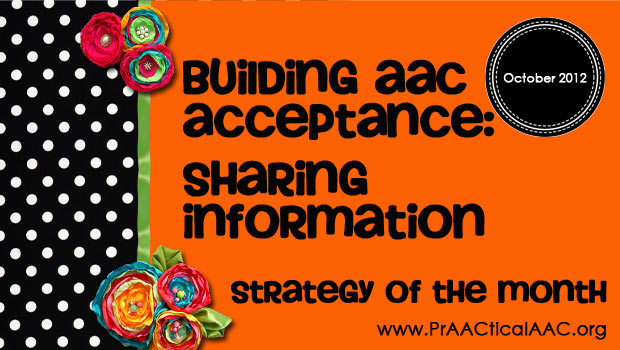
While there are certainly attitudinal barriers to AAC, it’s also true that sometimes the people we are trying to influence just need more information. Sounds simple, right? Not exactly. Especially when we consider these factors. Adult learners prefer to chart their own course to learning new things rather than have others lay that out for them. Our behaviors are most likely to change when we discover solutions for ourselves, as opposed to following directions that others give to us. We have a limited amount of time to guide others to the information they need. Here are some things that have worked for us. Develop a bank of educational materials that pertain to the topics that you face most often in your clinical work. Create resource files for general topics, such as the empirically-supported benefits of AAC, and specific topics, such as the evidence base for using SGDs with individuals who... [Read More...]
October 20, 2012
by Robin Parker -
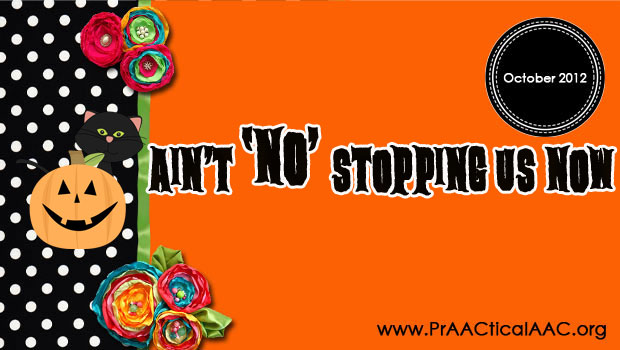
Sometimes saying ‘no’ to the demands of the day actually helps us rejuvenate and allows us to be more productive. Saying ‘no to false information helps us to advocate for ourselves. The ‘no’ topic seems to be trending now. There have been quite a few blog posts and comments about the issue (Just Say No, How and When to Give Your Students A Break). We are so glad that this topic is getting more focus. Of course everyone agrees that ALL people have the right to say ‘no’. But it is not always so simple. There are many types of ‘no’. There is the outright ‘no’, the ‘no’ to more work, the ‘no’ for disagreement, the ultra important ‘NO’ to unwanted touching, and many more. And depending upon how you say ‘no’ is the difference between it being accepted or… NOT. The issue of saying ‘no’ gets more complicated when... [Read More...]
October 19, 2012
by Carole Zangari -
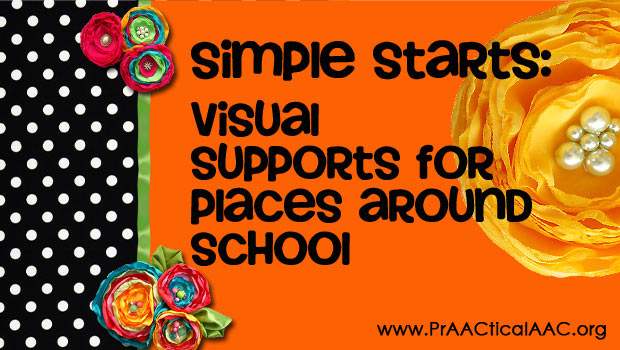
Simple Start is a series of posts that discuss AAC-related tools and strategies that are rather quick and easy to make or implement. Whether you are brand new to AAC or relatively experienced, we all come to a point where complicated just won’t do. – In our first Simple Start, we’re talking about Picture Card Rings, a type of visual support for language comprehension. The National Professional Development Center on Autism Spectrum Disorders defines visual supports as any tool presented visually that can help a person function in their day-to-day life. In this case, we’ve narrowed it down to the specific case of using photos of places around a school to help the student better understand words like ‘cafeteria’ and ‘clinic.’ — Most people with AAC needs do not require a communication system that represents language through photographs. This is a very good thing since there is no way to... [Read More...]
October 15, 2012
by Robin Parker -
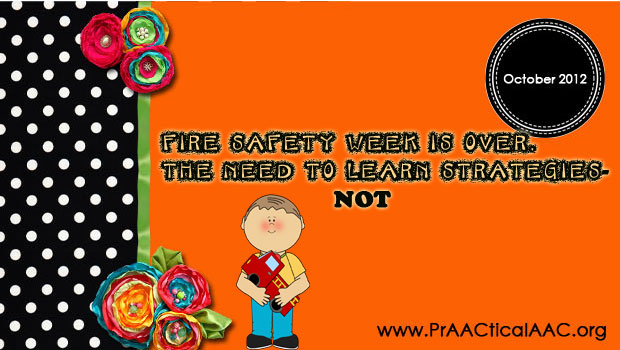
Fire Safety Week is over now but the need to learn fire safety strategies is NOT. If you missed these great fire safety resources, here they are to help you prepare for an fire emergency The 3 P’s to Keep Your Kid Safe During an Emergency Sensory Breaks & Learning Activities Firefighters are being Educated in Auburn On-Line Fire Safety Games for Kids How To Teach and Present Information, Lesson Plans, and Visual Supports for children and adults with Intellectual Disabilities For Teachers and SLPS Fire Rescue– an app for children that teaches the basics of fire safety through games, mazes, puzzles, matching, and more Apples 4 Teacher- kids fire prevention activities and information
October 8, 2012
by Robin Parker -
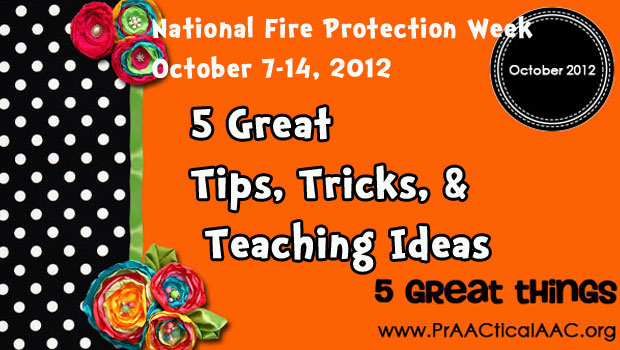
It is National Fire Protection Week October 7-13, 2012. Check Out These 5 Great Tips, Tricks, and Teaching Ideas: Sensory Breaks & Learning Activities Firefighters are being Educated in Auburn On-Line Fire Safety Games for Kids How To Teach and Present Information, Lesson Plans, and Visual Supports for children and adults with Intellectual Disabilities For Teachers and SLPS
October 7, 2012
by Robin Parker -

PRACTICE FIRE SAFETY- watch what you heat. It’s Fire Prevention Week 2012– October 7-October 15, 2012. There are many Fire Prevention Week campaign resources available through the National Fire Protection Association (NFPA). Additionally, we learned that the National Fire Protection Association (NFPA) has incredible safety information for EVERYONE, All the time. In exploring NFPA’s website, we saw the dedication in protecting ALL children and adults from the many dangers of fire. The Safety Signals Project is another great fire prevention resource funded by Autism Speaks. We are not super worriers by nature, but thought it is would be great time to update some our fire safety supports. National Fire Prevention Association Fire Safety- Specialized Fire Drill Social Narrative Being Prepared-Autism– (Webinar) Fire Safety-Limited Hearing (great information) Fire Safety- Older Adults– (we love the posters) Safety Fact Sheets- Multiple Languages NFPA E-Newsletter– (love the focus on quality of life for people with disabilities) + lots more The Safe... [Read More...]
October 2, 2012
by Carole Zangari -
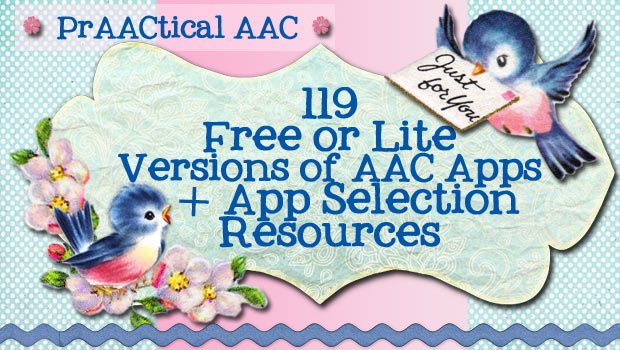
If you’ve been following our blog, you know that we have mixed feelings about the AAC app revolution. More specifically, we’ve had concerns about the decision-making process around app selection, the paucity of apps that allow for children to learn true generative language, and a few other things. We continue to advocate for AAC app selection to occur within the context of a feature match process that gives appropriate attention to the full range of AAC options. In this mega-post we’ve included our most recent update of free and lite versions of AAC apps for iOS and Android plus a variety of additional resources related to AAC app selection. Tools to Use In Making Decisions About AAC Apps Feature match form developed by Jessica Gosnell at Boston Children’s Hospital Feature match checklist created by Scott Marfilius and Kelly Fonner Our supplemental rubric covering language and communication features, RELAAACs Places to... [Read More...]









